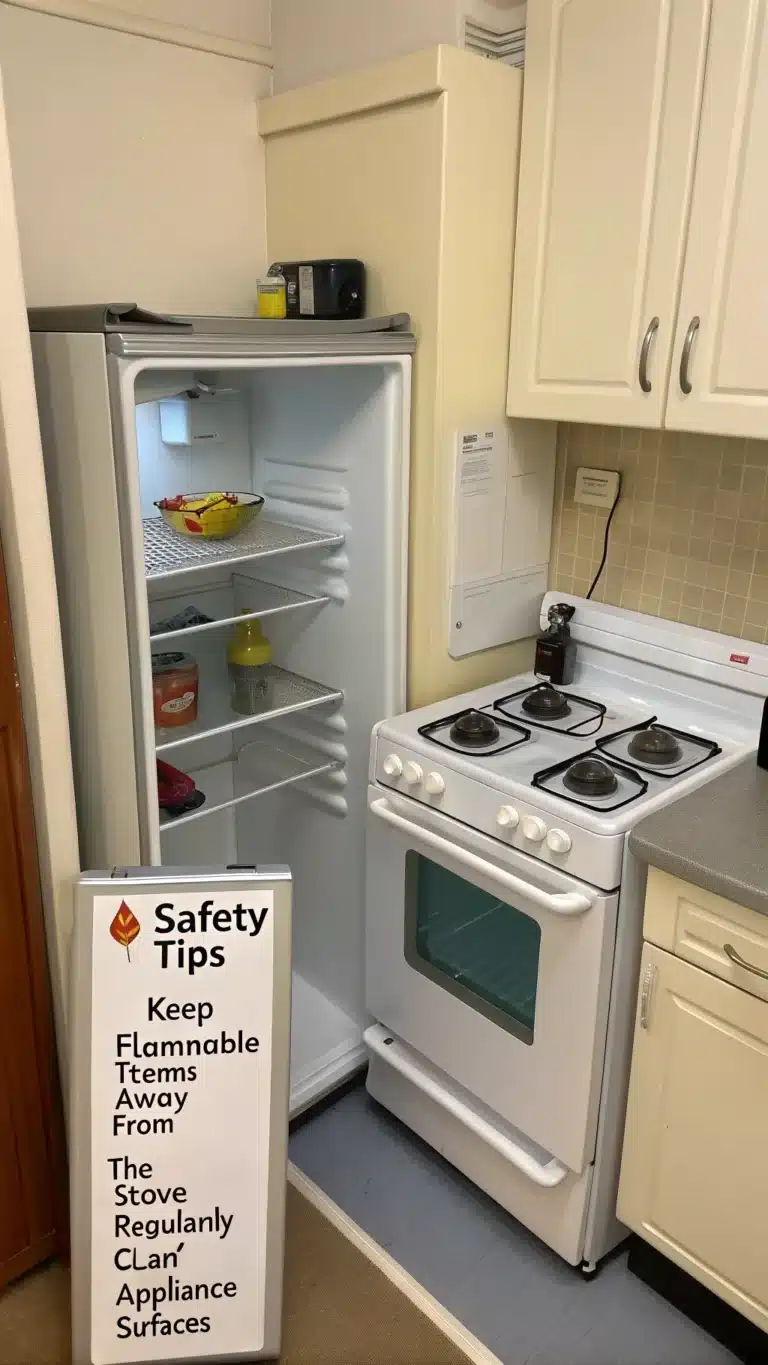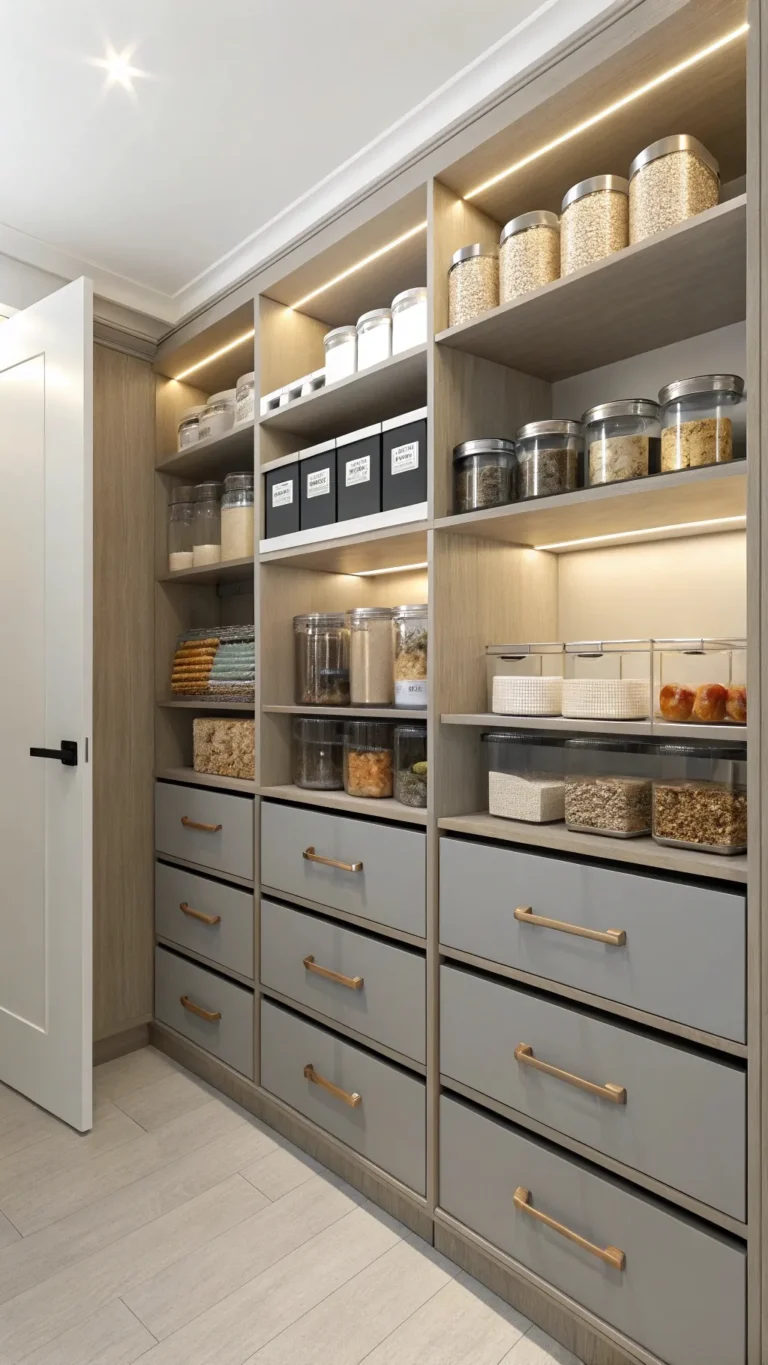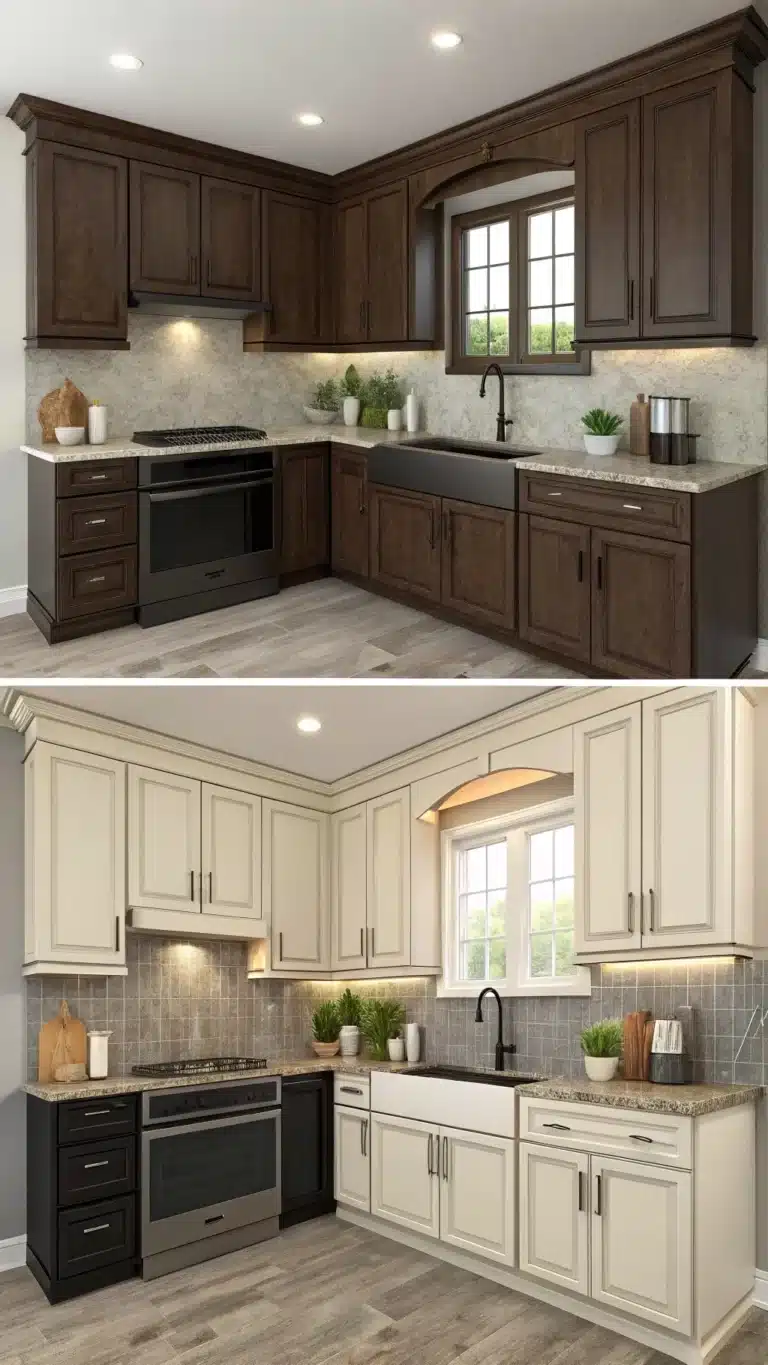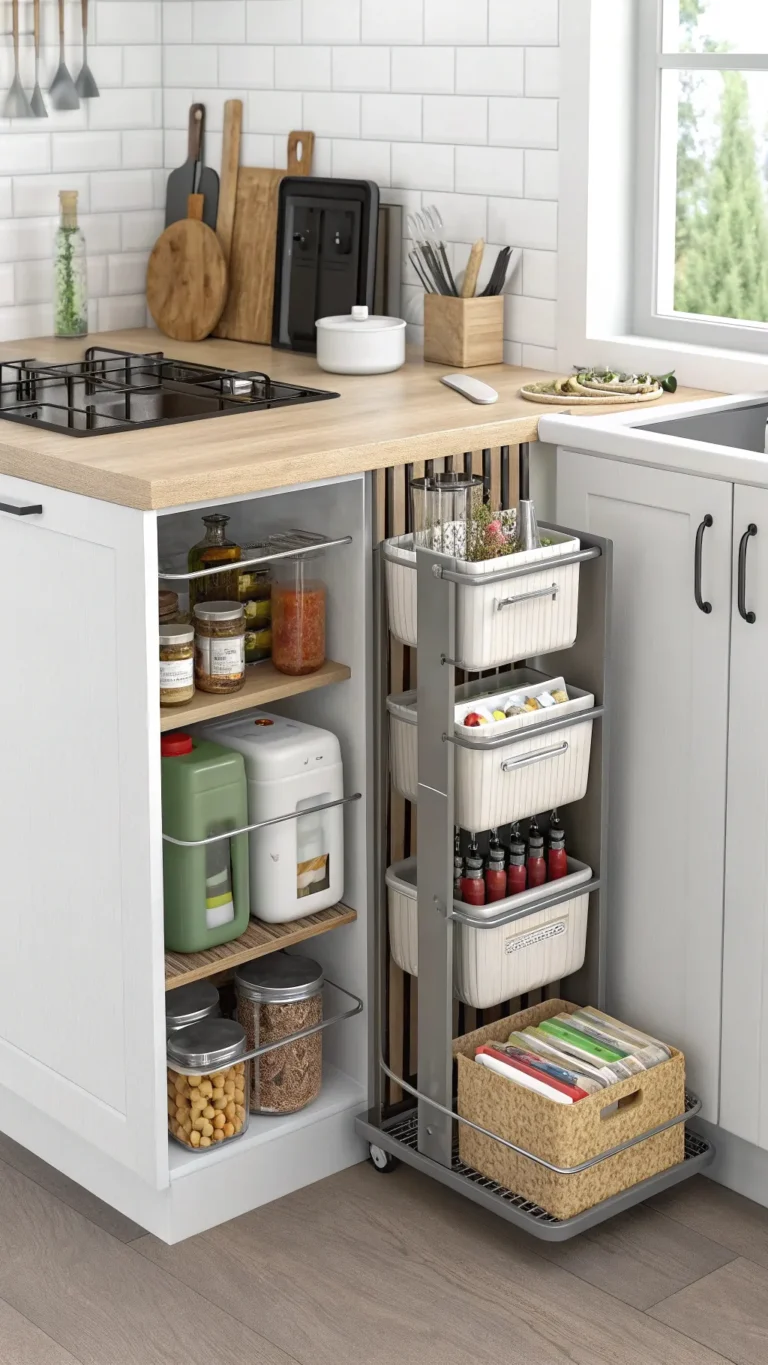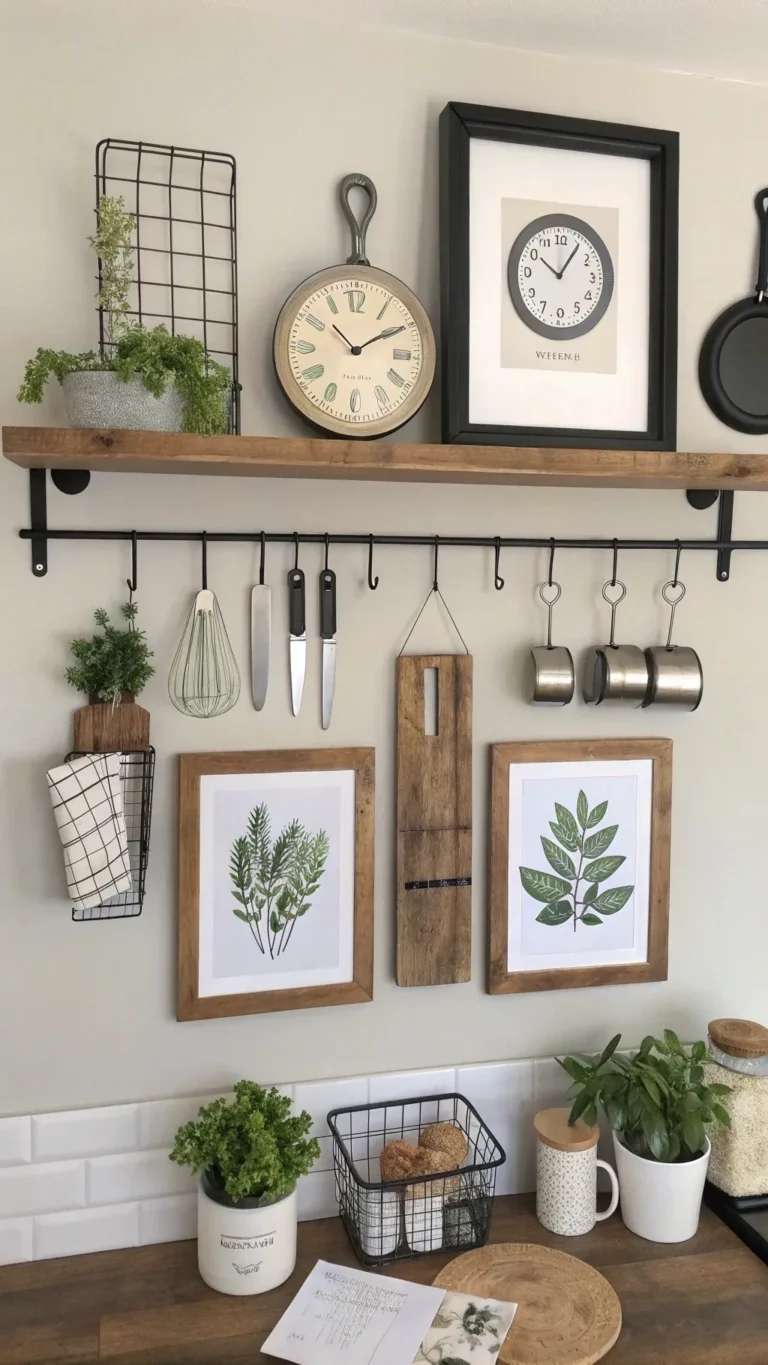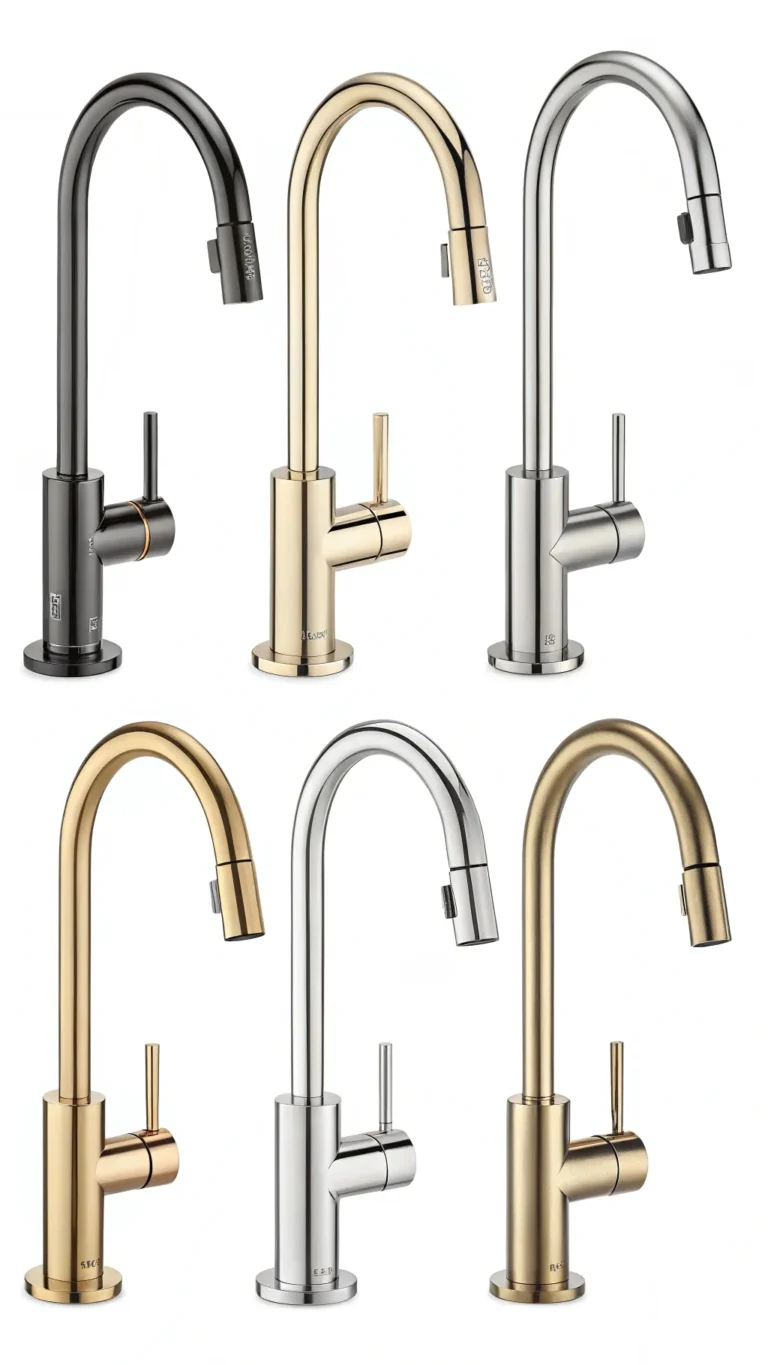Introduction
Small kitchens often feel dark and cramped. Shadows make it harder to work. Limited space leaves little room for bulky lighting. That’s frustrating when cooking or cleaning. Poor lighting cuts down both function and style. Lighting isn’t just about brightness. It shapes how the kitchen feels and works.
Lighting transforms tight kitchens into cheerful, inviting spaces. It can open up rooms, cut shadows, and highlight design. Small kitchen lighting ideas matter more than many realize.
This article shares ten smart, practical lighting ideas for small kitchens. We’ll cover basics like layering light, strong task lighting, stylish accents, and smart, energy-efficient tech. Whether you rent or own, DIY or hire pros, these tips will help you brighten your small kitchen and make it feel larger.
Why Layering is Key in Small Kitchens (and How to Start)
Creating a small kitchen that feels bright and open requires layering light. No single light can do it all. Layering mixes different light types for a balanced effect.
Understanding the Three Layers: Ambient, Task, and Accent
- Ambient light fills the entire space with general brightness.
- Task light targets work areas like counters and sinks.
- Accent light highlights design features or adds warmth.
Each layer solves a different problem. Ambient prevents dark corners. Task cuts shadows during food prep. Accent adds style and coziness.
Together, these layers build a kitchen that looks spacious and works well.
Idea 1: Establish a Strong Ambient Base
Ambient light forms the foundation. In small kitchens, it prevents gloominess. Most kitchen lighting designs start here.
Recessed lighting saves space by sitting flush with the ceiling. Flush-mount or semi-flush fixtures fit low ceilings without blocking sightlines. Track lighting offers flexibility: You can aim lights where needed most.
How to Calculate Ambient Needs: Multiply your kitchen’s square footage by 20-30 lumens per square foot. For example, a 100-square-foot kitchen needs roughly 2,000 to 3,000 lumens.
Place ambient lights evenly across the ceiling for smooth coverage. Avoid a single center light. Spread out fixtures to reduce shadows and uneven light.
A simple diagram may help visualize this setup. Consider splitting your kitchen into zones. Add one recessed or flush fixture per zone.
Check our guide on choosing LED bulbs for the best brightness balance. LED bulbs last long and use less energy.
Brilliant Task Lighting: See What You’re Doing!
Good task lighting is essential in a small kitchen. It stops shadows and strains on your eyes. Bright, targeted light keeps food prep and cooking safe and easy.
Idea 2: The Power of Under Cabinet Lighting
Under cabinet lights brighten countertops where you work most. They erase shadows cast by upper cabinets. This lighting makes chopping and measuring easier.
LED strips are popular. They produce continuous light along cabinet undersides. Puck lights offer small, intense spots of light. Linear fixtures provide sleek, bright illumination.
You can pick wired under cabinet lights for a permanent solution. Plug-in styles suit renters or less permanent use. Battery-powered lights offer quick fixes without wiring.
Place lights close to the cabinet’s front edge to cover your workspace fully.
Check photos of effective under cabinet lighting in small kitchens for inspiration.
Under cabinet lighting ranks high in many experts’ lists of must-have kitchen lights.
Idea 3: Brightening the Sink Area
The sink is a busy spot needing clear vision. Bright sink lighting aids washing and prep tasks.
Choose small pendants or flush mounts here. Keep lights high enough to avoid glare on water. Adjustable ceiling lights also work well.
A well-lit sink confines dark zones often overlooked in kitchen lighting plans.
Idea 4: Lighting Over Islands or Peninsulas
Small kitchens with islands or peninsulas benefit from focused light here. This area often doubles as a prep, dining, or work spot.
Small pendant lights add character and direct light to the surface. Track lights or vent hood lighting offer alternatives.
Set pendants 30-36 inches above the countertop. This height keeps light focused without obstructing sight.
Choose pendants that complement kitchen scale. Large or heavy fixtures overwhelm small spaces.
Look for photos of modest pendant lights hanging over small kitchen islands to see scale.
Elevating Your Small Kitchen’s Style with Light
Lighting can add style and personality. Small kitchens need fixtures that enhance space without crowding it.
Idea 5: Strategic Pendant Lights (Beyond the Island)
Pendants don’t have to hang over islands only. They can brighten corners, small dining spots, or replace dull ceiling lights.
Choose smaller, minimalist designs. Clear or glass shades keep the look airy. Avoid bulky pendants that make spaces feel closed in.
Well-placed pendants add interest while keeping openness.
Examine images with creative pendant placement for fresh ideas.
Idea 6: The Versatility of Recessed Lighting
Recessed lights can provide ambient and accent lighting. Position them to wash walls with light, making walls recede visually.
Slim-profile options fit low ceilings. Adjustable gimbals allow you to direct light exactly where needed.
Recessed lights help make small kitchens look bigger by reducing shadows.
Idea 7: Wall Sconces for Targeted Glow
Wall sconces brighten narrow spaces without using ceiling room. They suit small nooks or walls near prep areas.
Pick low-profile sconces to avoid bumping in tight spots. ADA-compliant fixtures work well for narrow walkways.
Sconces bring charm and warmth, completing lighting layers.
Thinking Outside the Box: Clever Lighting for Tight Spots
Explore lighting ideas that blend into small spaces.
Idea 8: The Magic of LED Strip Lights
LED strips flexibly fit under cabinets, inside panstries, drawers, or atop cabinets. They offer soft, continuous light that highlights details.
Peel-and-stick options simplify installation. Diffusers smooth harsh light.
Use LED strips inside drawers to find utensils fast.
Combination of flexible and rigid strips suits various spots.
See photos with LED strips inside drawers and along toe kicks.
Idea 9: Toe-Kick Lighting for Ambiance and Safety
Toe-kick lighting runs beneath lower cabinets. It casts subtle, low-level light along floor edges.
These lights add ambiance without overpowering. They provide safe nighttime navigation.
Late-night kitchen visits become easier with toe-kick lights.
Bonus Mini-Idea: In-Cabinet or Drawer Lighting
Lights that turn on with cabinet doors or drawers improve visibility. Battery-powered options work well without wiring.
They help keep small kitchens organized and bright inside storage.
Lighting Your Small Kitchen for 2025 and Beyond
Embrace new tech and energy savings while lighting your kitchen.
Idea 10: Embrace Smart Lighting Technology
Smart lights allow dimming, color changes, and remote control. Scheduling and voice commands add convenience.
Start with smart bulbs in key fixtures. Smart switches offer broader control.
Smart lighting helps manage mood and saves energy.
Focus on Energy Efficiency (LEDs)
LEDs remain top choice for small kitchens. They use less power and last longer than other bulbs.
Choose Kelvin temperatures carefully:
– Warm light (2700-3000K) for cozy ambient lighting.
– Cool light (4000-5000K) for focused task areas.
Lumens indicate brightness; aim for layers with matching needs.
Energy Star rates help pick efficient products.
Consider Controls: Dimmers & Multiple Switches
Dimmers create adjustable light levels for mood and saving energy.
Separate switches for ambient, task, and accent lights allow flexible use.
Plan your switch layout before installation for ease.
Bringing Your Small Kitchen Lighting Ideas to Life: Planning & Budgeting
Good planning makes lighting projects smoother.
Assess Your Needs: Where Do You Need Light Most?
Study your kitchen’s dark spots and high-traffic zones. Draw a simple map marking ambients, task, and accent areas.
This map guides fixture placement.
Setting a Realistic Budget
Budget depends on fixtures, bulbs, and installation.
DIY saves money but suits only some lighting types. Hiring electricians ensures safety in wiring jobs.
Put priority on task lighting first; ambiance can follow.
DIY vs. Hiring a Professional
Plug-in options and replacing bulbs/fixtures often work for DIYers.
Adding recessed lights or hardwired under-cabinet fixtures usually requires pros.
Always switch off power before working with electricity.
Common Mistakes to Avoid
Don’t rely solely on one overhead fixture.
Match fixture size to kitchen scale.
Avoid incorrect bulb color or brightness.
Don’t forget task lighting or dimmers.
Putting It All Together: A Step-by-Step Approach
Plan → Purchase fixtures → Install → Test Lighting.
Your Small Kitchen Lighting Questions Answered
How does lighting make a small kitchen look bigger?
Using layered lighting reduces shadows and opens space. Light washing walls creates depth. Reflective surfaces near lights add brightness. Choose slim fixtures to avoid clutter.
What’s the best type of lighting for task areas?
Under cabinet lighting brightens countertops best. LED strips or linear fixtures are highly effective. Extra lights over sink and islands improve visibility.
Can I install small kitchen lighting myself?
Plug-in strips and battery lights are easy DIY. Hardwired fixtures or recessed lights should use qualified electricians.
How many different types of lights do I need?
At least ambient and task layers. Accent lights improve style. Usually, 2-4 fixture types cover these layers well.
What are common mistakes to avoid?
Using only one central light. Choosing too large fixtures. Skipping task light. Ignoring bulb brightness and color temperature. Forgetting dimmers.
Light Up Your Small Kitchen’s Potential
Good lighting brightens small kitchens, making them more functional and spacious. Layer ambient, task, and accent lights for best results. Smart fixtures and energy-efficient LEDs upgrade style and sustainability. Thoughtful planning avoids mistakes and fits your budget.
Tackle your lighting project with confidence. Assess your kitchen, explore these ideas, and test what works for you. Your kitchen can shine bright and feel larger with just a few well-chosen lights.
Start planning your own small kitchen lighting ideas today! Share your experiences and questions below.
Alt Text Suggestions:
– Bright LED under cabinet lighting in a small kitchen
– Stylish pendant lights over a small kitchen island
– Recessed lighting making a small kitchen look bigger
– Layered kitchen lighting design small spaces
– Task lighting kitchen countertop area
– Energy-efficient smart lighting in a modern small kitchen
This post guides you with simple, smart small kitchen lighting ideas for 2025. Light up your kitchen and life!

